You will never look at trash the same way again with this photo series
You are what you throw away.
Photographer Zinkie Aw focuses on the seemingly mundane aspects of Singapore society to reflect on the trends and behavior that pervade the nation. One of her older series, "Republic of Pulau Semakau (A Story about Trash and People)," was exhibited as part of the Singapore International Photography Festival (SIPF) at the Singapore National Museum. Here, we talk to her about how she stumbled upon this idea and what this says about environment and identity.
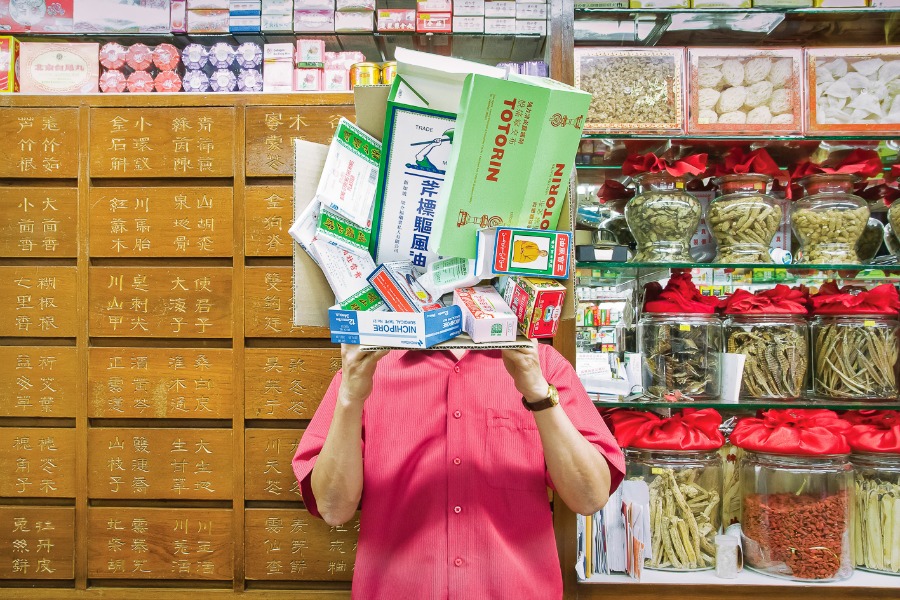 Mr Medicine
Mr Medicine
What got you interested in photographing the waste of people?
Photographing for my personal work usually begins with a complaint. For this project, it began with how I would personally dispose of the items in my personal bin in my room, or workspace, because I didn’t want others to know what I have purchased, eaten, or basically, know what I did in a day.
Subsequently this axiom was formed: “You are what you throw away.” And thus I went about stalking people and their personal bins in different spaces. It was to be a visual story about waste and identity, that is in line with my personal work relating to society and their habits. Our own dustbins are, essentially, a part of one’s personal space, almost akin to a type of "identity autospy."
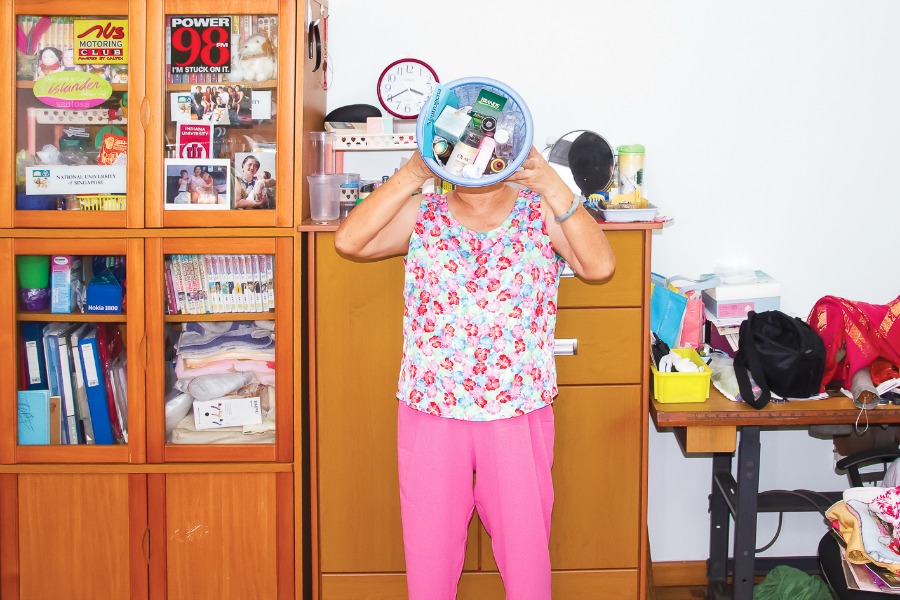 Grandma Beauty Regime
Grandma Beauty Regime
What were the criteria when choosing subjects for your images?
I would approach strangers, family and friends about what makes up their personal waste bin on a normal day, and look out for variations in the details. I would also ask the subjects about whether these bins reflect who they are, and think about the stories behind what they consume or discard every day. I also asked if they were willing to also keep some trash for me before I come to photograph them. Through different subjects, I believe they fit pieces of a puzzle to form an interesting series on bins and personal choices.
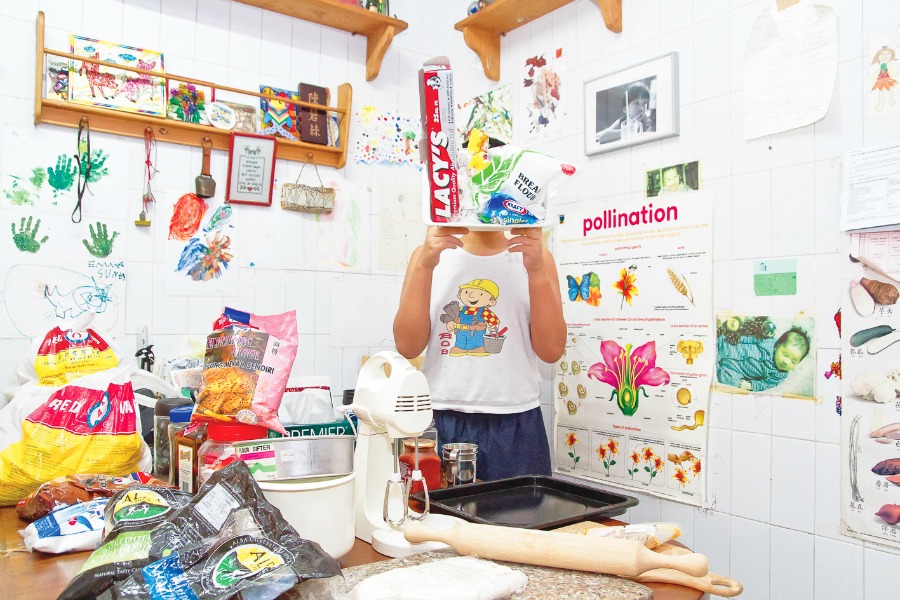 Boy Baker
Boy Baker
Why did you choose to cover their faces, and put their rubbish bins front and center of the shot?
Because it would be easier to get a ‘yes’ for permission? Haha, that’s the practical part. I mostly approach strangers in my work. More seriously with respect to the thematic issues, faces relate to our identities. It is the ‘face’ that meets with others in this community and society, like a mask of a bin. By looking at the face that is replaced visually by a bin, viewers get to guess who this is, and by looking at the environmental portraits.
 Mr Train Modeller
Mr Train Modeller
I noticed that location plays an important part in this series.
I wanted to photograph environmental portraits so that the viewer would be able to find out more about this subject (whose face is hidden) via his or her environment, other than just the contents in the bin. However, most of the locations were just based on where these subjects live, work, or where they produced the trash that I photographed. So it’s been pretty amazing, to just be able to find the best spot in their space, that illustrates the story best!
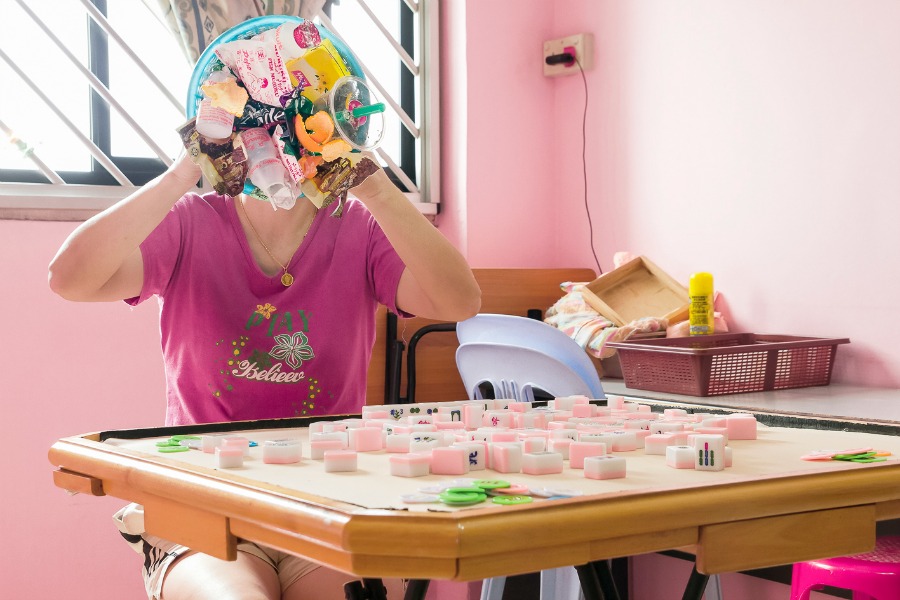 Miss Mahjong
Miss Mahjong
What were some of the funny or interesting things that happened while shooting?
That the pasting of some of the contents in the bin (like for Ms Mahjong’s case…) took much longer than the photoshoot itself! Unlike what some people thought, the photographs were all shot in one take, and I had spent time pasting the trash in the bin so that they would hold up for the shoot. Also, after I released the photographs, there were some friends who were impressed with the physique of Mr Fitness, and asked me if he was available. Haha!
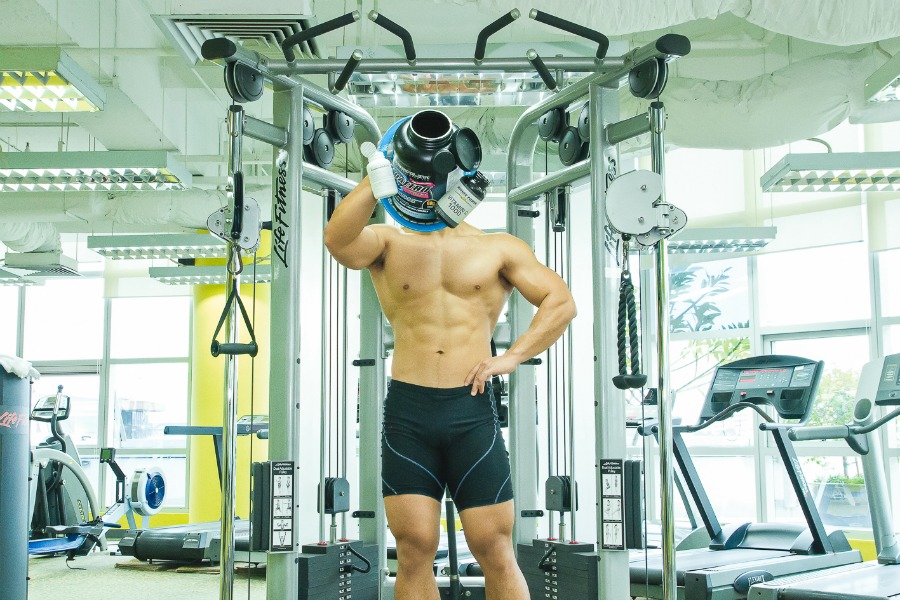 Mr Fitness
Mr Fitness
I also notice that people from walks of life consume differently, and you show that we pollute the environment in myriad ways.
Through photographs of trash and their environment, viewers are exposed to things owned and disowned by different people.
Pieced together, I guess this body of work anchors to issues of waste management in Singapore—to realise things that we as individuals discard, will collectively contribute to Singapore’s only landfill on the offshore island of Pulau Semakau. That was how I had inspiration for this project title.
 Mr Ice-Cream
Mr Ice-Cream
Just by how we live our daily lives in today’s fast-paced and modern lifestyle, consuming things, we have our carbon footprints, and add to an ailing condition. And most of us think of trash as out of sight, out of mind, but what happens to things after we trash it a the nearest bin centre? Not many people think about the ‘afterlife’ of trash–trash does not just disappear like that. It is the start of another chain of events.
That being said, however, this sentiment comes after the desire to photograph people behind their bins, to tell of their identities first and foremost.
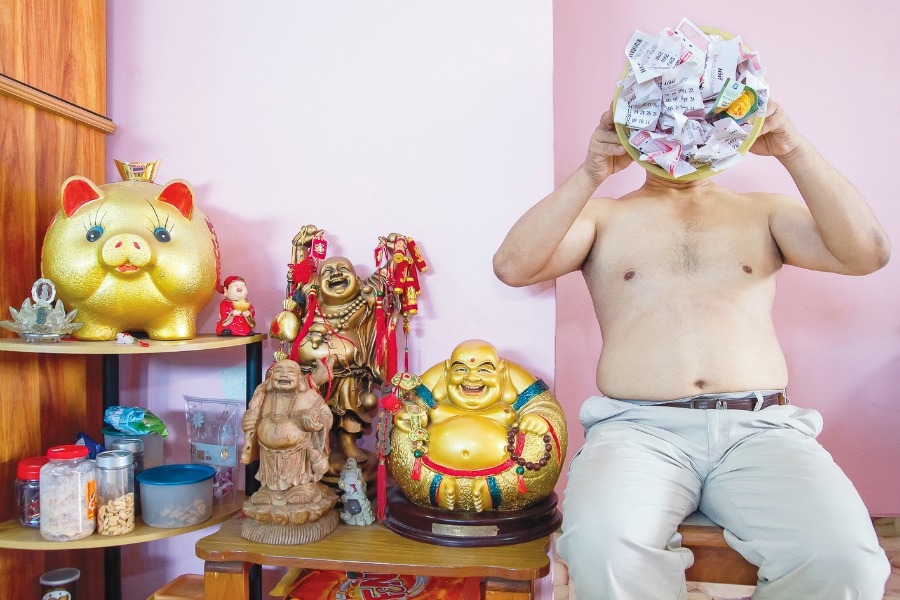 Mr Lottery
Mr Lottery
What’s your next project?
After this series, I photographed Singlish, Tanlines, Storerooms, Gangnam Style, Candy Crush. These projects are more quirky and stand out from my photography teaching gigs and corporate event jobs.
So here’s my next public service call: I am looking for families who still use the sarong cradle for their young ones. Please write to me here, and you can be part of my next project!
Advertisement